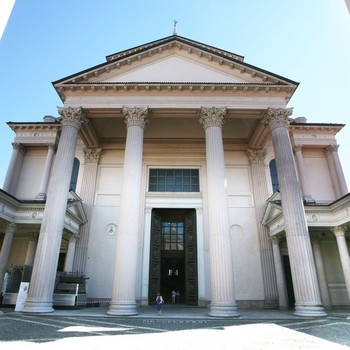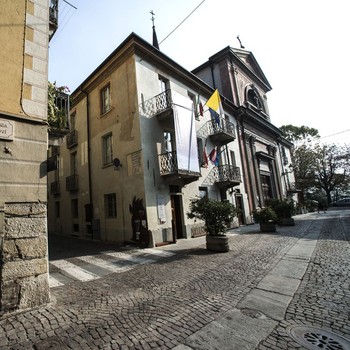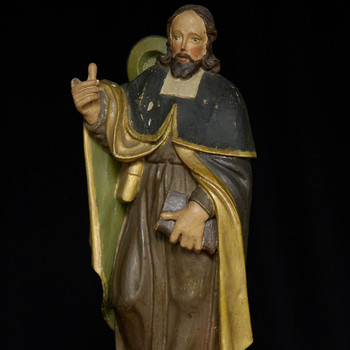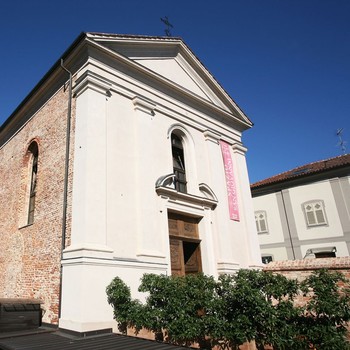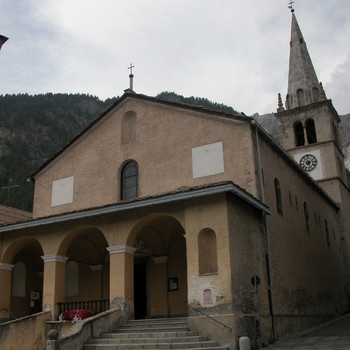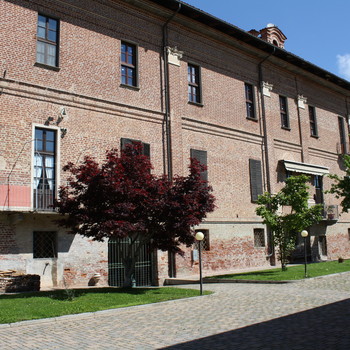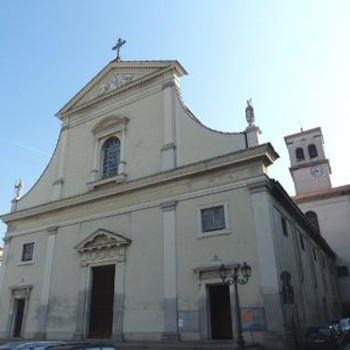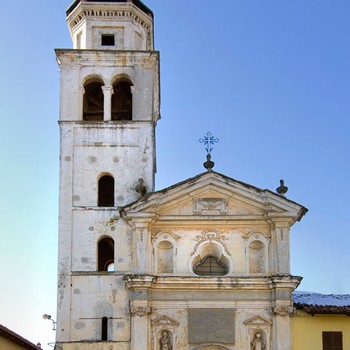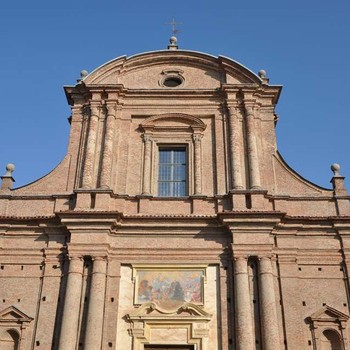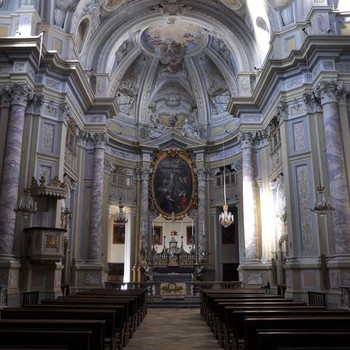Cathedral of San Pietro
Diocesi di Alessandria ( sec. XIII; XIX )
The cathedral of San Pietro, in the diocese of Alessandria, is a 19th-century building that replaced an earlier Romanesque church, dating from the 13th century and demolished by order of Napoleon Bonaparte.
Cathedral of Santa Maria Assunta
Diocesi di Novara ( sec. IV; XX )
Novara Cathedral is a complex building, whose 19th-century structure designed by Alessandro Antonelli features details from the Early Christian and Romanesque periods, while the interior houses a wealth of artworks.
Cuneo San Sebastiano Diocesan Museum
Diocesi di Cuneo-Fossano
The museum is located in the picturesque old town of Contrada Mondovì. The museum itinerary is arranged on five levels and starts from the ancient church dedicated to Saint James, then moves on to the room dedicated to Saint Sebastian.
Diocesan Museum System
Diocesi di Susa
Diocesan Museum System. Constituted by the network of ecclesiastic museums coordinated by the Diocesan Museum of Sacred Art of Susa, which collect together and display the religious artistic heritage of the Susa Valley.
San Giovanni Diocesan Museum
Diocesi di Asti
The former cathedral church of San Giovanni, now known as the “Spazio San Giovanni” and is part of the Diocesan Museum currently under construction in the Episcopal Complex of Asti Cathedral.
Chiesa di Sant’Antonio Abate
Diocesi di Susa ( sec. XVII )
La chiesa parrocchiale di Sant’Antonio Abate si erge nel centro storico della borgata. L'interno della chiesa è arricchito dai meravigliosi intagli policromi di stampo naturalistico realizzati nel XVII secolo dalla "scuola di Melezet".
Abbazia di Santa Maria
Diocesi di Torino ( sec. XI; XVIII )
La visita all’antica Abbazia di Santa Maria, di proprietà della Parrocchia Assunzione di Maria Vergine di Caramagna Piemonte (CN), è gestita dall’Associazione Culturale “L’Albero Grande”.
Chiesa di Santa Maria Maggiore
Diocesi di Alessandria ( sec. XVII; XIX )
La Chiesa di Santa Maria Maggiore di Valenza risale al primo Seicento, sorta su di una precedente struttura romanica. La facciata attuale, sobria e neoclassica, appartiene ai restauri eseguiti nel 1890.
Chiesa di Santa Croce
Diocesi di Torino ( sec. XVII )
Importante edificio dell'architetto Lanfranchi, con intervento di Bernando Antonio Vittone. La Chiesa dell’arciconfraternita di Santa croce è sotto la parrocchia di Caramagna e gestita dall’ Associazione “L’albero Grande”.
Chiesa di Sant'Iffredo
Diocesi di Alba ( sec. XIII; XIV )
L'edifico mostra prevalentemente i segni degli interventi attuati nel terzo decennio del XVIII secolo.
Chiesa di San Filippo Neri
Diocesi di Cuneo-Fossano ( sec. XVIII )
Costruzione settecentesca, in passato Chiesa dei Padri Filippini, del cui convento restano tracce di parte del porticato affiancato verso la piazza, con facciata in cotto rustico e interno ad una sola navata circondata da sei cappelle laterali.
Chiesa della Santissima Trinità
Diocesi di Cuneo-Fossano ( sec. XVIII )
La Chiesa della SS. Trinità è uno dei progetti più significativi dell’architetto Francesco Gallo. Fu costruita nei primi anni del settecento come oratorio della Confraternita dei Battuti Rossi.
Piedmontese Baroque
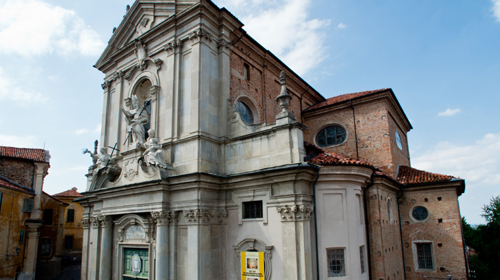
The first of the Piedmontese styles to be studied and imitated across Europe, Piedmontese Baroque involves all the arts, from major to minor, and stands as a superlative artistic testimony, withstanding comparison to Paris and Rome. Guarino Guarini modified Borromini’s plasticism, using mathematical models, and incorporated it in façades and domes (San Lorenzo, Holy Shroud). The true author, however, was the Sicilian Filippo Juvarra, who became a subject of Victor Amadeus II and interpreted the king’s cultural and artistic ambitions. Superga and Vicoforte are monuments on a par with the Savoy palaces, but works on a smaller scale, like Vittone’s chapel at Valinotto and Alfieri’s Carignano Cathedral, also interpret the figurative dynamism of Baroque art.



